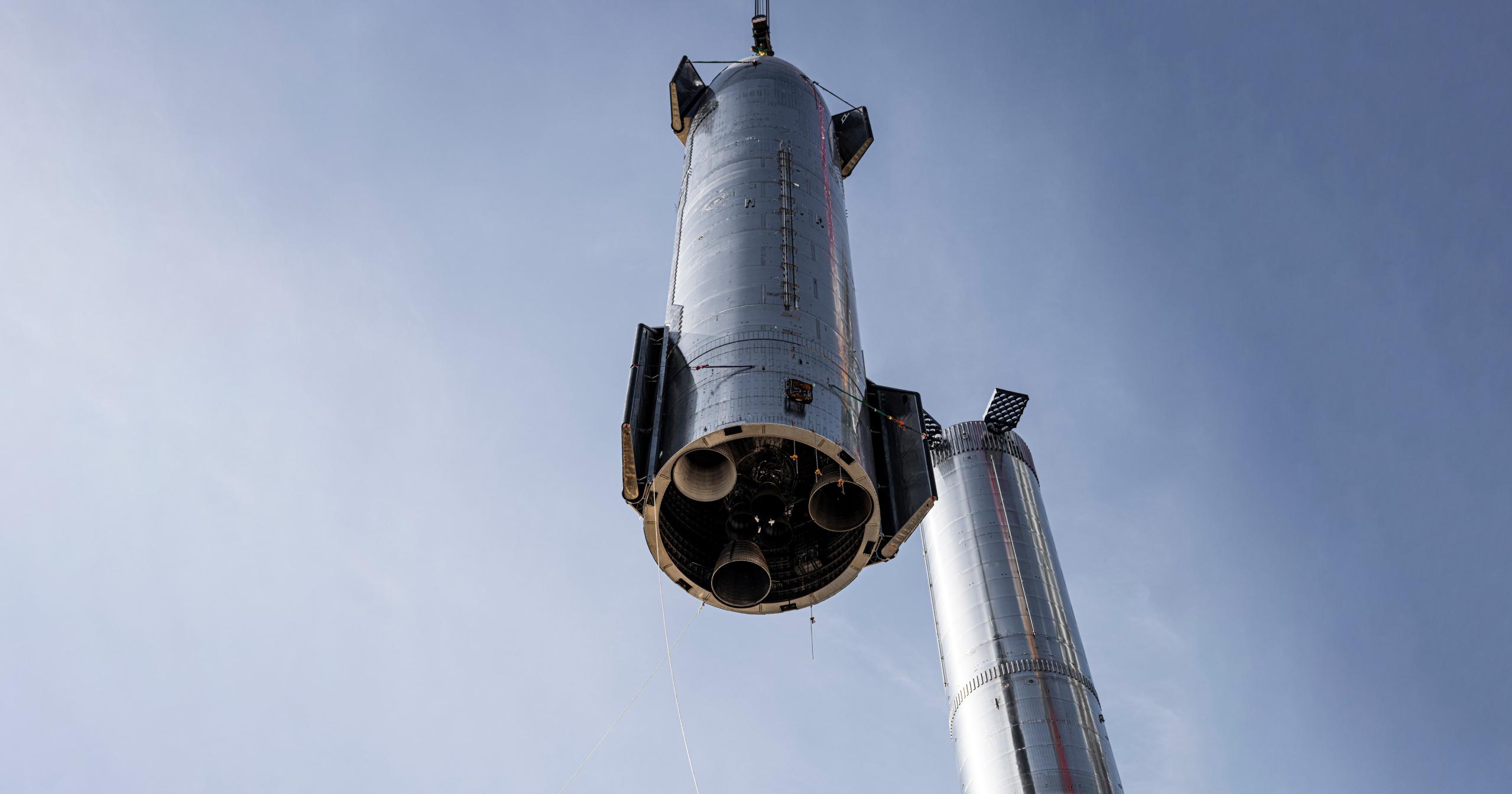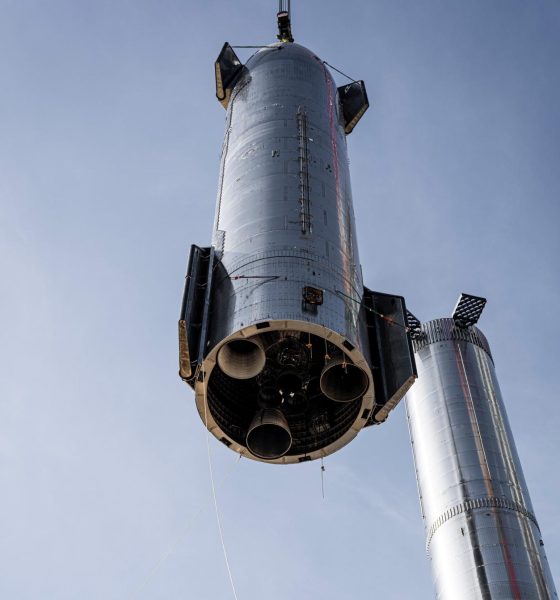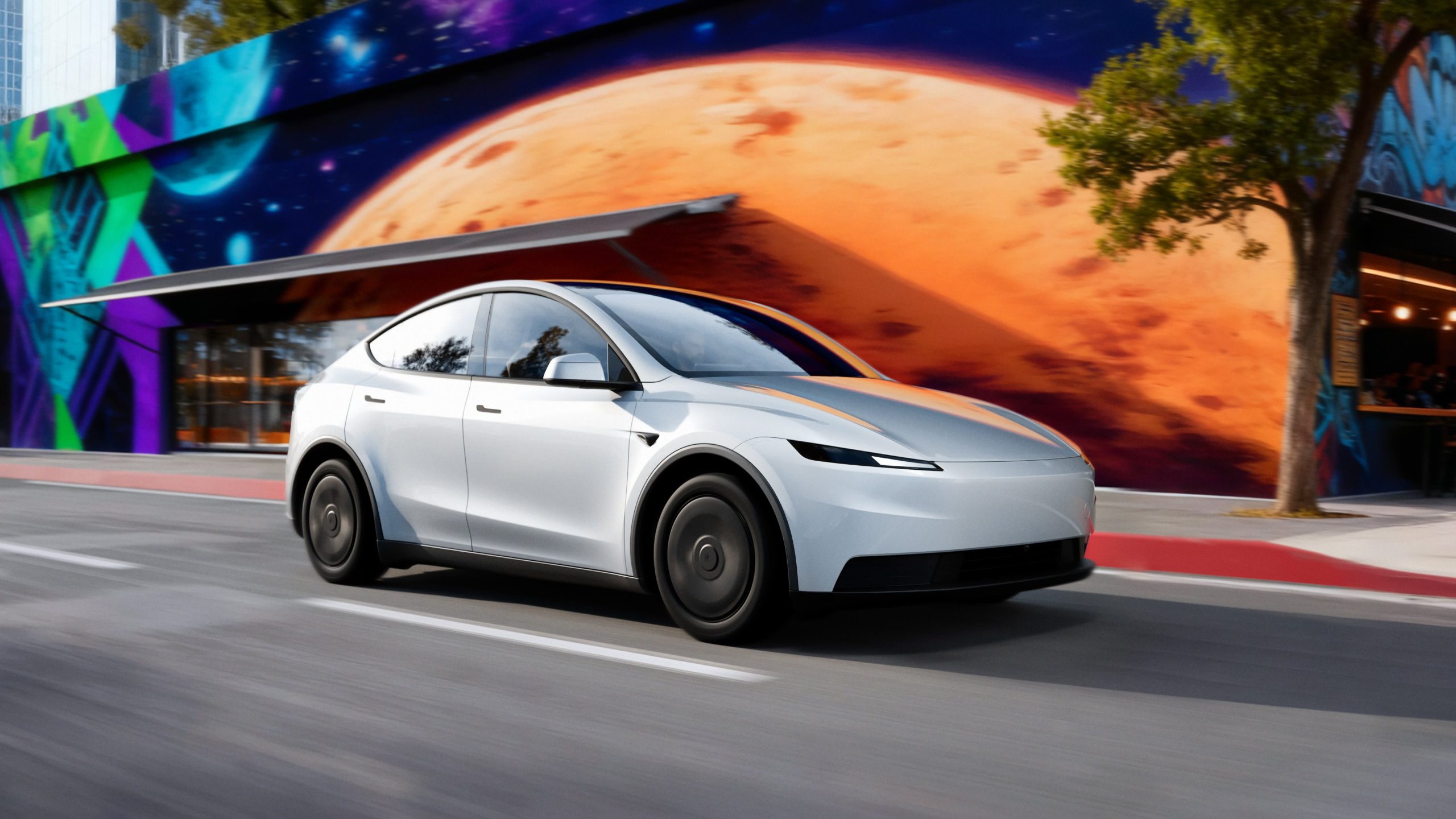

News
SpaceX to upgrade Starship with 50% more Raptor engines
SpaceX CEO Elon Musk says that future Starships – or at least certain Starship variants – are being upgraded with 50% more Raptor engines and stretched propellant tanks.
On December 17th, the CEO revealed the plans, confirming a tweet published three months prior stating that Starship was “begging for an extra 3 engines.” Musk was likely referring to the fact that a 9-engine Starship – combined with upcoming 33-engine Super Heavy boosters – would create a rocket with 42 engines, a number made famous as “the answer to the ultimate question of life [and everything]” in Hitchhiker’s Guide to the Galaxy – both of which the CEO vocally enjoys. As ever, it’s thus almost impossible to tell jokes from serious, consequential plans – as is the case with Starship.
Nonetheless, origination aside, adding another three Raptor engines to Starship – boosting the count from six to nine – and stretching its tanks could be a substantial upgrade.
According to amateur modelers, who are generally able to estimate rocket performance with enough information about its structures, shape, and engines; an optimal nine-engine Starship’s tanks would be stretched about 25% to store an additional 300 tons (650,000 lb) of cryogenic liquid oxygen and methane (LOx/LCH4). That upgraded Starship would have a liftoff mass close to 1600 tons (3.5M lb) and stand about 55 meters (~180 ft) tall – 10% taller than current ships.
At stage separation, close to vacuum, a stretched Starship with three sea-level-optimized Raptors (RCs) and six vacuum-optimized Raptors (RVacs) should produce at least 2000 tons (4.4M lbf) of thrust – and possibly more than 2250 tons (~5M lbf) depending on engine performance. At that upper level of thrust, Starship – an upper stage – would be just 10% less powerful than the first stage of Falcon Heavy, the most powerful operational rocket in the world.
Regardless of its thrust, dimensions, or weight, what matters most is how a stretched, nine-engine Starship would impact that overall rocket’s launch performance. If unofficial modelers are to be believed, the results are significant: compared to a ‘normal’ Starship with a six-engine upper stage and 33-engine booster, the stretched ship could theoretically boost the amount of payload the rocket can launch to low Earth orbit (LEO) from about 150 tons to 220 tons or more (330,000 to 485,000+ lb) – an almost 50% improvement. In fact, per another recent comment from Musk indicating that Starship – unlike almost all other rockets – won’t temporarily throttle down on ascent, the total payload performance could be a bit less than 230 tons (~500,000 lb) – more than 50% greater than a shorter six-engine Starship.
If those estimates are accurate, upgrading Starship with nine Raptors and stretching its tanks is a no-brainer. It might slow development and make all nine-engine ships cost a substantial fraction more but a 50% improvement in payload performance would significantly improve the efficiency of Starship’s more ambitious Moon and Mars launch profiles, which require numerous orbital refuelings.
In effect, a 50% payload increase would allow SpaceX to complete most refueling tasks more efficiently, quickly, and cheaply. Even if the upgrade plans mean that all Starships will be stretched and carry nine Raptors, fully refueling the new Starship variant in LEO could require 7 tanker launches instead of 8-10. If SpaceX doesn’t mind maintaining multiple distinct Starship variants, which appears to be the case, then ships that are exclusively dependent on refueling (Moon and Mars landers in particular) could stay at their current size, with ~1200 tons (~2.6M lb) of propellant storage and six Raptors. A fleet of upgraded Starships could thus refuel their smaller siblings with just 5-6 tanker launches.
However, there’s a good chance that the extra mass required to stretch Starship ~5.5m (~4 tons or ~9000 lb) is minor enough that SpaceX will instead stretch all Starship variants. In fact, for variants like NASA’s HLS Moon lander and future Marsbound Starships, which depend entirely on refueling to reach their destinations, stretched tanks and more propellant storage could increase the amount of payload they could send to the Moon, Mars, and other high-energy destinations by quite a bit. Ultimately, it will be fascinating to hear more details from SpaceX and Musk on how exactly the upgraded Starship design might benefit those operations in the coming weeks and months.

Elon Musk
Tesla CEO Elon Musk sends rivals dire warning about Full Self-Driving

Tesla CEO Elon Musk revealed today on the social media platform X that legacy automakers, such as Ford, General Motors, and Stellantis, do not want to license the company’s Full Self-Driving suite, at least not without a long list of their own terms.
“I’ve tried to warn them and even offered to license Tesla FSD, but they don’t want it! Crazy,” Musk said on X. “When legacy auto does occasionally reach out, they tepidly discuss implementing FSD for a tiny program in 5 years with unworkable requirements for Tesla, so pointless.”
I’ve tried to warn them and even offered to license Tesla FSD, but they don’t want it! Crazy …
When legacy auto does occasionally reach out, they tepidly discuss implementing FSD for a tiny program in 5 years with unworkable requirements for Tesla, so pointless. 🤷♂️
🦕 🦕
— Elon Musk (@elonmusk) November 24, 2025
Musk made the remark in response to a note we wrote about earlier today from Melius Research, in which analyst Rob Wertheimer said, “Our point is not that Tesla is at risk, it’s that everybody else is,” in terms of autonomy and self-driving development.
Wertheimer believes there are hundreds of billions of dollars in value headed toward Tesla’s way because of its prowess with FSD.
A few years ago, Musk first remarked that Tesla was in early talks with one legacy automaker regarding licensing Full Self-Driving for its vehicles. Tesla never confirmed which company it was, but given Musk’s ongoing talks with Ford CEO Jim Farley at the time, it seemed the Detroit-based automaker was the likely suspect.
Tesla’s Elon Musk reiterates FSD licensing offer for other automakers
Ford has been perhaps the most aggressive legacy automaker in terms of its EV efforts, but it recently scaled back its electric offensive due to profitability issues and weak demand. It simply was not making enough vehicles, nor selling the volume needed to turn a profit.
Musk truly believes that many of the companies that turn their backs on FSD now will suffer in the future, especially considering the increased chance it could be a parallel to what has happened with EV efforts for many of these companies.
Unfortunately, they got started too late and are now playing catch-up with Tesla, XPeng, BYD, and the other dominating forces in EVs across the globe.
News
Tesla backtracks on strange Nav feature after numerous complaints

Tesla is backtracking on a strange adjustment it made to its in-car Navigation feature after numerous complaints from owners convinced the company to make a change.
Tesla’s in-car Navigation is catered to its vehicles, as it routes Supercharging stops and preps your vehicle for charging with preconditioning. It is also very intuitive, and features other things like weather radar and a detailed map outlining points of interest.
However, a recent change to the Navigation by Tesla did not go unnoticed, and owners were really upset about it.
For trips that required multiple Supercharger stops, Tesla decided to implement a naming change, which did not show the city or state of each charging stop. Instead, it just showed the business where the Supercharger was located, giving many owners an unwelcome surprise.
However, Tesla’s Director of Supercharging, Max de Zegher, admitted the update was a “big mistake on our end,” and made a change that rolled out within 24 hours:
The naming change should have happened at once, instead of in 2 sequential steps. That was a big miss on our end. We do listen to the community and we do course-correct fast. The accelerated fix rolled out last night. The Tesla App is updated and most in-car touchscreens should…
— Max (@MdeZegher) November 20, 2025
The lack of a name for the city where a Supercharging stop would be made caused some confusion for owners in the short term. Some drivers argued that it was more difficult to make stops at some familiar locations that were special to them. Others were not too keen on not knowing where they were going to be along their trip.
Tesla was quick to scramble to resolve this issue, and it did a great job of rolling it out in an expedited manner, as de Zegher said that most in-car touch screens would notice the fix within one day of the change being rolled out.
Additionally, there will be even more improvements in December, as Tesla plans to show the common name/amenity below the site name as well, which will give people a better idea of what to expect when they arrive at a Supercharger.
News
Dutch regulator RDW confirms Tesla FSD February 2026 target
The regulator emphasized that safety, not public pressure, will decide whether FSD receives authorization for use in Europe.

The Dutch vehicle authority RDW responded to Tesla’s recent updates about its efforts to bring Full Self-Driving (Supervised) in Europe, confirming that February 2026 remains the target month for Tesla to demonstrate regulatory compliance.
While acknowledging the tentative schedule with Tesla, the regulator emphasized that safety, not public pressure, will decide whether FSD receives authorization for use in Europe.
RDW confirms 2026 target, warns Feb 2026 timeline is not guaranteed
In its response, which was posted on its official website, the RDW clarified that it does not disclose details about ongoing manufacturer applications due to competitive sensitivity. However, the agency confirmed that both parties have agreed on a February 2026 window during which Tesla is expected to show that FSD (Supervised) can meet required safety and compliance standards. Whether Tesla can satisfy those conditions within the timeline “remains to be seen,” RDW added.
RDW also directly addressed Tesla’s social media request encouraging drivers to contact the regulator to express support. While thanking those who already reached out, RDW asked the public to stop contacting them, noting these messages burden customer-service resources and have no influence on the approval process.
“In the message on X, Tesla calls on Tesla drivers to thank the RDW and to express their enthusiasm about this planning to us by contacting us. We thank everyone who has already done so, and would like to ask everyone not to contact us about this. It takes up unnecessary time for our customer service. Moreover, this will have no influence on whether or not the planning is met,” the RDW wrote.
The RDW shares insights on EU approval requirements
The RDW further outlined how new technology enters the European market when no existing legislation directly covers it. Under EU Regulation 2018/858, a manufacturer may seek an exemption for unregulated features such as advanced driver assistance systems. The process requires a Member State, in this case the Netherlands, to submit a formal request to the European Commission on the manufacturer’s behalf.
Approval then moves to a committee vote. A majority in favor would grant EU-wide authorization, allowing the technology across all Member States. If the vote fails, the exemption is valid only within the Netherlands, and individual countries must decide whether to accept it independently.
Before any exemption request can be filed, Tesla must complete a comprehensive type-approval process with the RDW, including controlled on-road testing. Provided that FSD Supervised passes these regulatory evaluations, the exemption could be submitted for broader EU consideration.








